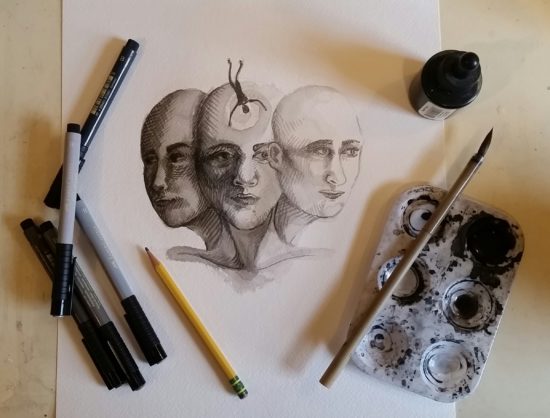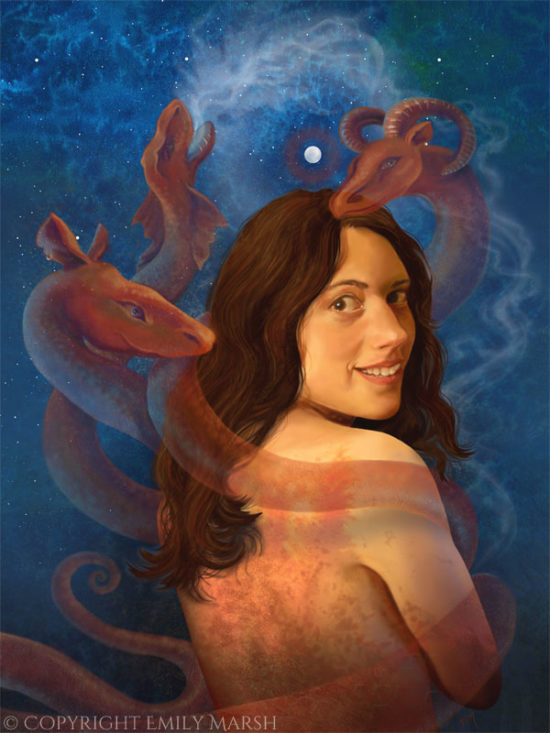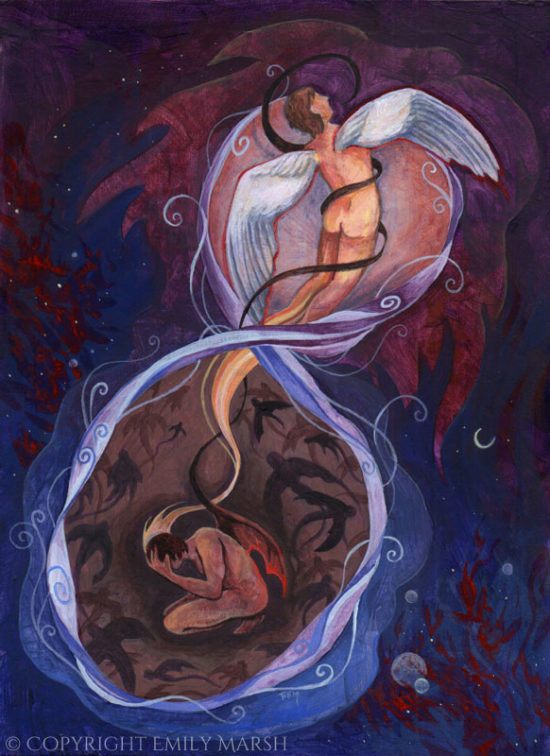
All of us have good days–when we feel like we are talented, intelligent and lovable. And bad days–when we feel inadequate, and unwanted. Ok, nevermind… we all have moments where we feel these things. Our days our filled with a constant switching back and forth between our “best selves” and our “worst selves”.
The “worst self” is the one who doesn’t take risks. And our “best self” has the confidence to make large leaps in life, or more importantly, has the faith to believe these risks might just pay off. When we go through any big positive change in our lives, we tune out the “worst self” and focus on a hope that things will turn out well, that we ARE adequate, smart, talented, beautiful, and charismatic. And we do have the chance to succeed.
But maybe this is one reason change is so damn uncomfortable. Because we also have something called an “upper limit problem” (Written about by Gay Hendricks in his book The Big Leap). Hendricks theorized that we have an internal thermometer of happiness. When our happiness level gets above our goal, it suddenly becomes very uncomfortable. Imagine your thermometer is set to 80º (a lovely summer day). Right now that temperature is a really high goal because you are currently living in 28º winter. As soon as you move forward in your life, getting closer to the 80º goal, your happiness increases. But once you hit 80º, you’re not sure how to absorb more happiness. Suddenly having so much success feels like a burden, and the idea of more success feels like the very scary unknown.
It makes sense to me that the “upper limit problem” is really a point we don’t let our “best selves” think beyond. When you’ve hit the day of 80º summer, your confident “best self” has no room to breath. So instead you look back towards to that “worst self” and start saying things like, “I don’t deserve to be in such a good relationship.” “I’m not myself when I’m at work; this place is too good for me.” “I must’ve lied to achieve this goal. My whole life feels fake.” And on and on.
Comfort zones apply to both fear and happiness.
So what do you do? Wait it out. Do everything to stay in the present and remember how you got here. Eventually that “best self” will open up again and set a higher goal, and you’ll be back in your “happiness comfort zone”.


 I love old adventure games because doing something as silly as picking up a few rocks from the ground can be absolutely crucial to winning the game. It’s easier to find solutions in these games versus life, because your perspective is not, “I am an adventurer trapped in a forest full of monsters with no money and nothing but the shirt on my back and a handful of rocks.” Instead, you think, “Wow, some rocks! I’m sure I can use these.” Because real life has way too many rocks in it for all of them to be useful (and plenty of other useless items and experiences), we tend to never look at these mundane, or negative things as anything useful.
I love old adventure games because doing something as silly as picking up a few rocks from the ground can be absolutely crucial to winning the game. It’s easier to find solutions in these games versus life, because your perspective is not, “I am an adventurer trapped in a forest full of monsters with no money and nothing but the shirt on my back and a handful of rocks.” Instead, you think, “Wow, some rocks! I’m sure I can use these.” Because real life has way too many rocks in it for all of them to be useful (and plenty of other useless items and experiences), we tend to never look at these mundane, or negative things as anything useful.